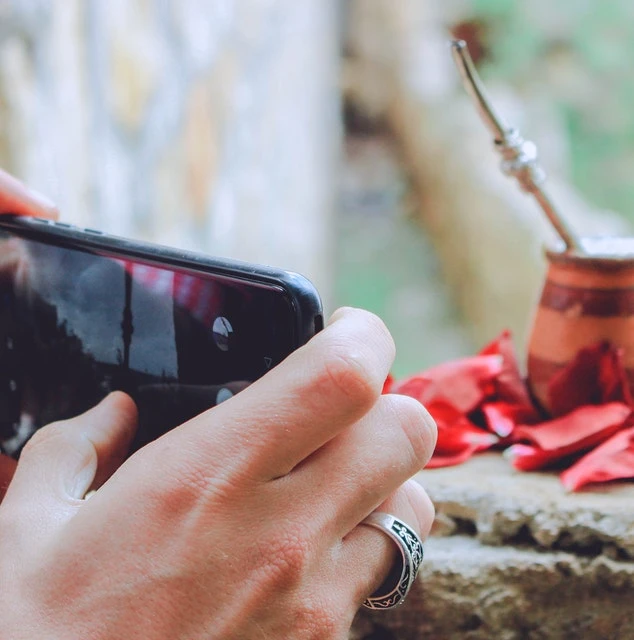Ever since the dawn of the Industrial revolution — from medieval European monasteries and the first towering skyscrapers to the reimagined mixed-use workspaces of today — we have seen the evolution of the office. It continues to evolve and endure, remaining a central part of the lives of the modern workforce. After all, a room’s design affects the mood and emotions of an individual.
However, what worked in previous years and what currently works today isn’t automatically what will continue to work best in the future. Office buildings are constantly in shift and will continue to change to support new ideas, innovative solutions, and technology. As we move towards the future at intensifying speed, many interior design and architecture experts have made excellent design predictions for the workplaces of the future.
The new year isn’t only a prime time to spruce up the home – it’s also the best time for an office overhaul. If you’ve been planning to renovate your workplace for some time now, here are a few design predictions you’ll want to consider.
Activity-based Working
If today’s modern office consists of cubicles, often designated based on hierarchy, the workplace of the future is different. Companies are beginning to adopt a forward-thinking and innovative design plan called activity-based working.
In an activity-based working setup, employees can situate themselves anywhere in the office that’s best for their current task. For instance, if an employee needs some peace and quiet to finish a presentation, they can move to the study, a pod, or any quiet or isolated area free from noise and distractions. If they need to collaborate closely with a colleague, they can sit together at a breakout space or lounge area where to exchange ideas freely.
While activity-based working is a good and natural fit with the modern on-demand culture, the design concept is not exactly new. Back in 1983, Robert Luchetti started the idea of creating “activity settings” for various office tasks, such as conducting meetings or receiving phone calls. Today, ABW is adopted readily in countries such as Australia, Denmark, the Netherlands, and Sweden.
Moreover, it’s keen to note the ABW isn’t just about adding phone booths or breakout spaces to a workplace. For ABW to exist in your office, take note of these four elements:
- An ABW workplace is designed with a variety of space types in one setting. Need a space for uninterrupted work? Take a desk in the study where you can focus in silence. Have to host a client meeting? Book a large conference room instantly. Want to collaborate with your team over coffee? Gather round in a dining-style booth. Whatever the activity, there’s a corresponding space ready and waiting.
- Sensory experience. ABW offices let employees easily gauge which space type is best for them in the moment. For instance, your pantry can be an example of a space that exudes energy. Upon walking in, employees smell freshly brewed coffee, hear upbeat music playing over the speakers, and feel the energy of colleagues thrumming in the space. These elements draw them in and entice them to pour a cup of coffee and chat with their co-workers. On the other hand, your study should be quiet to provide employees with enough mental space to focus on their deadlines or their next pitch deck. In this vein, different elements in the space act as cues to how others should use the space.
- Behavioral reinforcement. With sensory cues and optimal ABW design, your office works best when people are aware of the expectations of each space type: using phone booths for calls, being quiet in the study, and feeling empowered by their teams and leaders to use any space that suits their work at hand. After all, no amount of free coffee and ambient music will encourage a team to discuss and collaborate in the kitchen if their manager frowns on them for being away from their desks.
- Iterative learning. An AMB office truly empowers the workforce if company leaders also fully embrace the change in mindset that comes with the design and ever-evolving workspace.
Biophilic Design
Google’s giant rooftop garden. Microsoft’s treehouses. Amazon’s rainforest office. Biophilia or biophilic design is everywhere, being adopted by the world’s largest corporations, and it shows no signs of slowing down.

The concept of biophilic design originated in 1973 from the work of American psychologist Erich Fromm. He coined the term ‘biophilia’ to describe an innate love of life or living systems. According to him, human beings have an inherent connection to the natural world. Biophilic design is an innovative way to harness this connection, creating natural environments in urban spaces where people can live, work and learn.
Biophilic design is also known to have positive effects on employee wellbeing. Including natural elements in the design of an office space has been proven to boost the mood of employees, reduce stress, and increase productivity. If you want to reap the benefits of biophilic design, here are simple and easy ways to bring nature into your office space.
- Introduce plants to your office
The simplest way to bring nature into your workplace is through office plants. Office plants do not only add a more natural and welcoming feel to the workplace, but they also reduce unpleasant symptoms such as breathing problems, coughing and headaches. Plants also reduce CO2 levels, dust and mold.
- Incorporate wood, granite, and stone
Utilize natural materials such as wood, marble, stone, and granite in your interior design projects. These materials can each be used as finishes on counters, pillars, cupboards, tables, shelves, and desks. Wooden furniture is also a durable, accessible, and attractive option to consider.
If you want to be more creative with your biophilic design, you can use artificial plants to create living walls and drape vines across cabinets, shelves, and cupboards. These are great alternatives to basic landscape prints, effectively bringing nature into the office without compromising on floor space.
- Use natural color schemes and shapes
In terms of color schemes, this involves warm earthy tones such as greens, browns, tans, and golds. You can also use white and different shades of blue to mimic the sky, sea, and clouds. These are all colors that designers and the experts from CMYK agree on to embody biophilic design.
When it comes to the shapes and patterns of the furniture, opt for irregular or organic shapes instead of geometric ones. Geometric-shaped furniture pieces can come off as man-made. For instance, rather than buying a glass table for the lounge area, you can choose an oak coffee table with grain patterns and natural edges.
- Make the most of natural daylight
Bright artificial lighting is a staple in many modern offices but that doesn’t mean it’s the best option for your workplace. Harsh fluorescent lighting can cause eye strain and headaches, making employees feel exhausted at the end of a working day.
To make the most of your office’s natural light, make sure the windows aren’t completely covered by blinds. Face the workstations towards the windows instead of away from them. You can also install skylights to bring in more sunshine into the office, turning the ceiling into a natural source for lighting.
Homely Office Design
Striking the balance between professional interiors and the familiar warmth of home is something that companies have been trying to accomplish in years. This is why office design will see an increase of design elements associated traditionally with the home. These elements include coffee bars, breakout spaces with gaming equipment, and kitchen-style seating areas.
This balance aims to turn the office setting into a warm and welcoming space and feel less like a factory where people do monotonous tasks 8-9 hours a day. Since the COVID-19 pandemic has upturned the way people work, having homely office design will also remind employees of the productivity they’ve experienced while they were all working from home.
Homely office design focuses on two main aspects:
- The Kitchen. The kitchen is traditionally viewed as the “heart of the home.” In an office that embraces homely design, but it’s the heart of the workplace too. It is where your employees bond together over food, refuel their bodies and minds, and enjoy serendipitous interactions. These in turn all encourage creativity and innovation – a valuable commodity for any modern business. When renovating your office, don’t forget to focus on the interiors of your office kitchen.
- Breakout Space. Some of the best ideas are born away from a cubicle or office desk. Sometimes, they’re created in breakout spaces. If you want to create a cozy and homely breakout space, don’t forget about the decorations to make it inviting. For instance, colorful paintings, blankets, soft pillows, rugs, and carpets will give your breakout space a truly unique and friendly character. Plants will also easily enliven the space.
A Final Word
Although many businesses opt to continue remote working arrangements until the pandemic fully goes away, some are bringing their employees back into the office. If you have plans on doing an office overhaul to welcome your employees back, take some notes from the emerging design trends listed above. By doing so, you’re also planning your office for the future.







